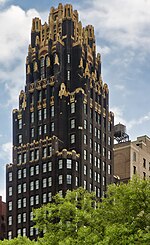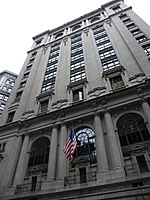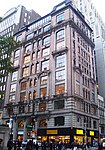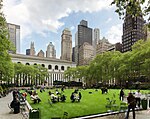Guttman Community College
2011 establishments in New York CityColleges of the City University of New YorkCommunity colleges in New York (state)Community colleges in New York CityEducational institutions established in 2011 ... and 2 more
Midtown ManhattanUniversities and colleges in Manhattan

Stella and Charles Guttman Community College is a public community college in New York City. It is the newest of the City University of New York's (CUNY) community colleges and was founded on September 11, 2011. It opened on August 20, 2012 as New Community College. In April 2013 the college was renamed following a $15 million endowment from the Stella and Charles Guttman Foundation. Guttman offers associate degree programs with majors in liberal arts, sciences, business, human services, information technology (IT), and urban studies. Students are accepted with either a high school diploma or Certificate of High School Equivalency.
Excerpt from the Wikipedia article Guttman Community College (License: CC BY-SA 3.0, Authors, Images).Guttman Community College
West 40th Street, New York Manhattan
Geographical coordinates (GPS) Address Phone number Website Nearby Places Show on map
Geographical coordinates (GPS)
| Latitude | Longitude |
|---|---|
| N 40.7529 ° | E -73.9841 ° |
Address
Bryant Park Hotel
West 40th Street 40
10018 New York, Manhattan
New York, United States
Open on Google Maps









